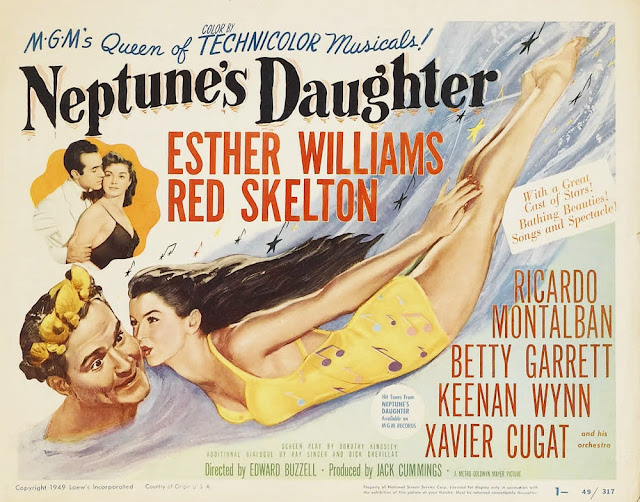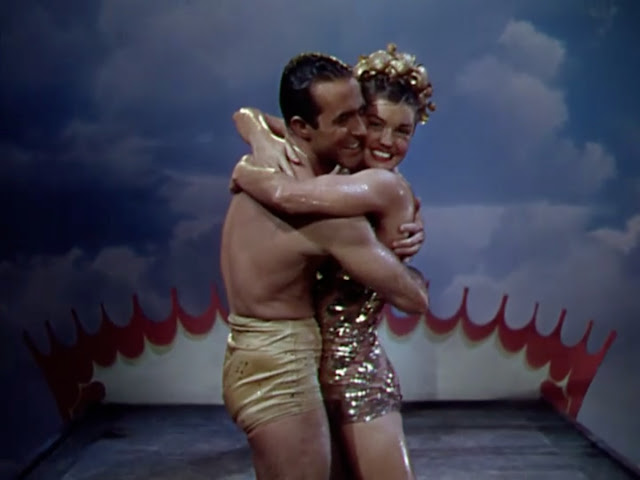"I'd like to tell you a story about a guy, a girl, and a bathing suit"
Neptune's
Daughter, a delightful technicolor musical romantic comedy film, is
celebrating its 75th anniversary. It was released on this very day in
1949 by MGM. This colorful masterpiece stars the talented Esther
Williams, Red Skelton, Ricardo Montalbán, Betty Garrett, Keenan Wynn,
Xavier Cugat, Xavier Cugat, and Mel Blanc. Directed by Edward Buzzell,
it introduced the Academy Award-winning song "Baby, It's Cold Outside"
by Frank Loesser sung by the four main actors.
I found the film to be a fun and engaging watch, a perfect distraction for some entertainment.
Plot:
Swimmer-turned-entrepreneur Eve Barrett teams up with her pal Joe
Backett to run a chic swimsuit business. When Eve's sister Betty starts
swooning over a smooth South American polo player named Jose O'Rourke,
Eve steps in to steer her away. Little does Eve know, that Betty is
actually smitten with Jack Spratt, a masseuse pretending to be Jose. To
shield her sister from heartache, Eve tracks down the real Jose and
agrees to a date. But in a surprising twist, Eve ends up catching
feelings too.
The
film requires you to overlook the absurd plot elements (such as someone
confusing Skelton with a South American polo star) and just go along
with it. I repeatedly watch the movie solely to admire the vibrant
swimsuits and the beautiful wardrobe worn by Williams. Interestingly,
this film is responsible for popularizing the timeless Christmas
favorite, and Academy Award-winning song "Baby, It's Cold Outside" by
Frank Loesser sung by the four main actors. Contrary to misguided
beliefs, this song is not promoting date rape. I really enjoyed the way
the song's lyrics were showcased in two different ways. In the first
duet, Montalban and Williams, Montalban pursues Williams. On the other
hand, in the duet between Garrett and Skelton, Garrett takes on the role
of the pursuer while Skelton defends himself. The version with the
main leads follows a more traditional and romantic approach, whereas the
duet with the supporting leads is filled with humor.
Williams
portrays a swimsuit designer in the movie and later drew inspiration
from the swimwear designs featured in the film to create her own line of
swimsuits.
When
Williams was filming the movie, she was actually pregnant with her
first child, so her swimming scenes are a bit calmer than you might
expect. Instead, the "chorus" is the one doing all the cool sliding and
diving stunts at the end, while Esther watches from a platform above,
cheering them on.
Williams
and Montalban, had co-starred in two movies together before this one:
Fiesta (1947) and On An Island with You (1948). Williams had also
collaborated with Red Skelton previously. He was her co-star in her
first major film, Bathing Beauty (1944) (and had a small role in Duchess
of Idaho, and starred alongside Williams in Texas Carnival (1951)).
Williams had recently finished filming a movie with Garrett, Take Me Out
to the Ball Game, which was released just two months before Neptune's
Daughter.







No comments:
Post a Comment